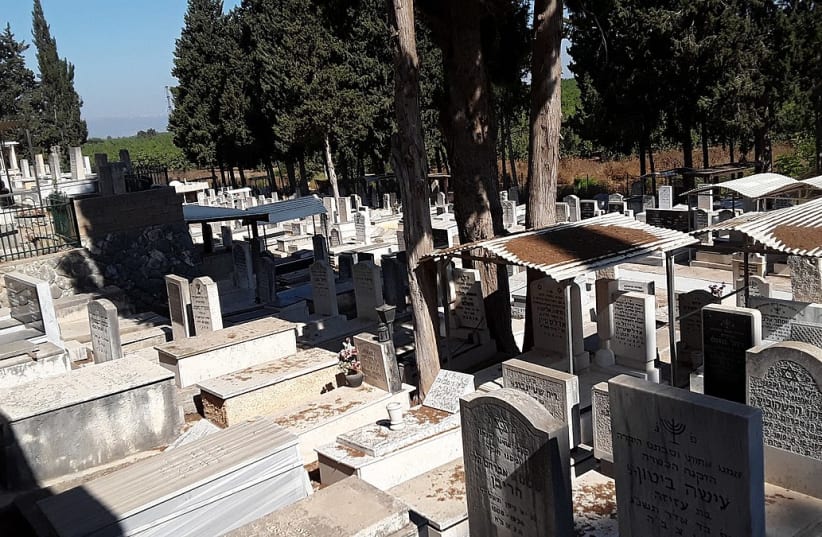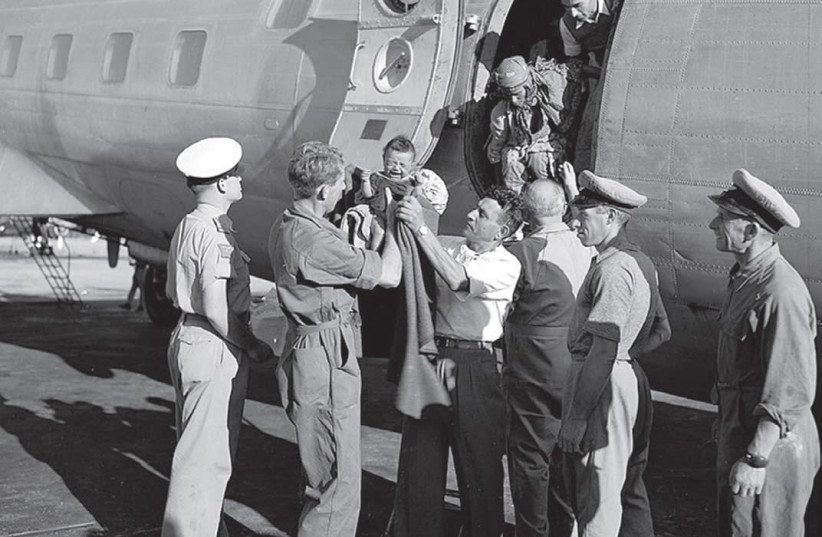A grave in Netanya’s Old Cemetery where a five-year-old Yemenite girl, Sa’ada Karni, was supposedly buried in 1951 – two years after she disappeared, supposedly after falling ill with malaria and muscular dystrophy, was opened on Tuesday.
The action was taken in accordance with the 2018 law on opening the supposed graves of children of East Yemen and the Balkans, with the grave opened at the request of the family and by order of the court by Dr. Haim Cohen and Dr. Michal Pir from the Institute of Forensic Medicine and under the management of attorney Meir Broder, who serves on behalf of the Health Ministry as the project manager for the opening the graves of lost children.
The remains were exhumed early on Tuesday morning, according to family lawyers Nurit Koren, Doron Radai and Rami Tsuberi, who demanded in 1997 that 10 other graves be opened; remains of 22 bodies were found, but DNA tests found no connection between the remains and the families whom he represented and who had been told by an investigation committee that they had been their relatives.
In cooperation with a burial society and based on the records and maps that it compiled, plus a sonar (ultrasound) test conducted by the ministry, the approximate location of the deceased’s grave was located, according to a statement by ministry spokeswoman Shira Solomon.
Remains that were found on Tuesday were transferred to the Institute of Forensic Medicine at Abu Kabir for further identification and DNA extraction. “The ministry will continue to work to help the families reach the truth in this painful case,” Solomon continued.
Lost remains of missing Yemenite children
A few weeks ago, the alleged grave of another Yemenite child who disappeared many decades ago was opened at the Segula Cemetery in Petah Tikva, but no remnants were found.
In 1994, the late Rabbi Uzi Meshulam of Yehud led a group of Yemenite Jews who fought Israeli law enforcement authorities after claiming that some 4,500 children of Jewish Yemenite immigrants were taken from their parents by the Israeli authorities and given to rich Ashkenazi Jews in Israel and abroad during the late 1940s and early 1950s while the Yemenite immigrants were falsely told that their babies had died from malnutrition or illness.
The Karni family, headed by Avraham and his two wives – Shulamit (Salma) and her daughters, 16-year-old Yona and B’naya who died young; and Esther and her two daughters, three-year-old Sa’ada and eight-month-old son Yedid – immigrated from Yemen in 1949. They were sent to live in the Beit Lid immigrant camp (ma’abara) in two separate tents. Esther cooked in one tent and Yona watched her younger siblings in the other. One day, a nurse entered the children’s tent and said she was going to take Sa’ada and Yedid for “routine tests” in the tent camp clinic. Yona – who had taken care of her siblings constantly and testified that they were healthy – strongly opposed this, and according to the family, the nurse took the youngsters “by force.”
Later, when Esther came to the tent to nurse the baby, the clinic team told her that both Sa’ada and Yedid had “died and were buried.” Esther “went wild” and refused to believe that her children had died, because they had been completely healthy. Yona ran to her father who ran to the clinic and demanded that his children be returned. The parents remained in the clinic for several days, refusing to leave.
According to the family, the clinic team then “returned Yedid alive and well” to his parents even though the clinic staff had claimed he had died and was buried. The tragic incident proved to Esther and Avraham Karni that their daughter too was alive and healthy. The couple made every effort to find out what had happened to Sa’ada but died in great sorrow.
The surviving daughters, Yona and Shoshana, filed a complaint on the disappearance of their siblings before two state committees that had been established to investigate the scandal, but neither of them helped discover the whereabouts of the daughter. One investigation committee finally told them that Sa’ada died and was buried at the Netanya cemetery when she was five years old, even though she was three when she disappeared. And the parents had not been allowed to see her for two years when she was allegedly ill with malaria and muscular dystrophy.
Even more strange was that the committee had registered the name of “Sa’adya Avraham” as a five-year-old boy with no identity card number, and Sa’ada had allegedly been buried in Netanya even though people at the immigrant camp who died were buried at the nearby Ein Shemer cemetery. “So who was buried at the Netanya cemetery,” said the Karni family demanded to know on the eve of the opening of the grave.

